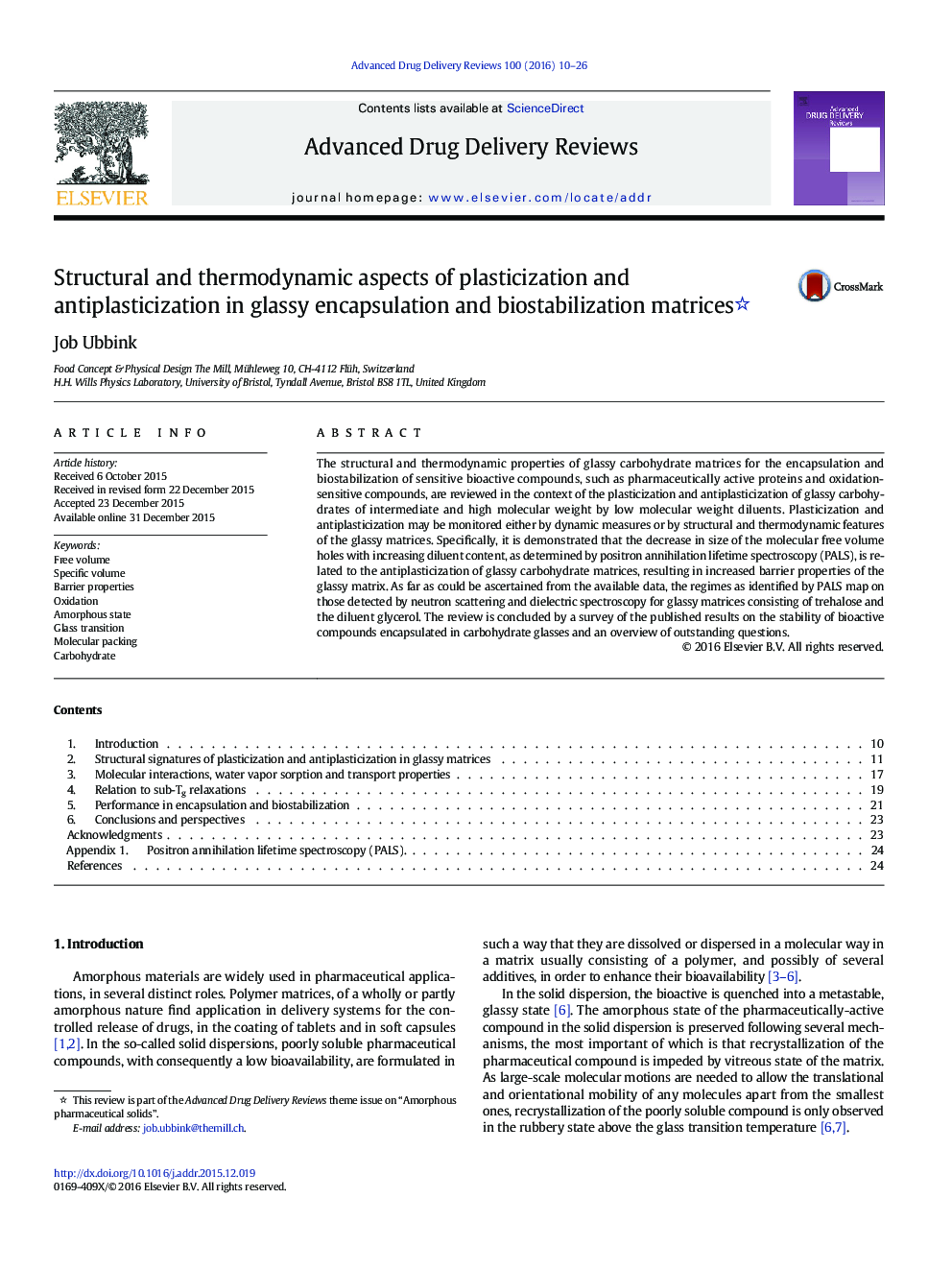| Article ID | Journal | Published Year | Pages | File Type |
|---|---|---|---|---|
| 2070698 | Advanced Drug Delivery Reviews | 2016 | 17 Pages |
The structural and thermodynamic properties of glassy carbohydrate matrices for the encapsulation and biostabilization of sensitive bioactive compounds, such as pharmaceutically active proteins and oxidation-sensitive compounds, are reviewed in the context of the plasticization and antiplasticization of glassy carbohydrates of intermediate and high molecular weight by low molecular weight diluents. Plasticization and antiplasticization may be monitored either by dynamic measures or by structural and thermodynamic features of the glassy matrices. Specifically, it is demonstrated that the decrease in size of the molecular free volume holes with increasing diluent content, as determined by positron annihilation lifetime spectroscopy (PALS), is related to the antiplasticization of glassy carbohydrate matrices, resulting in increased barrier properties of the glassy matrix. As far as could be ascertained from the available data, the regimes as identified by PALS map on those detected by neutron scattering and dielectric spectroscopy for glassy matrices consisting of trehalose and the diluent glycerol. The review is concluded by a survey of the published results on the stability of bioactive compounds encapsulated in carbohydrate glasses and an overview of outstanding questions.
Graphical abstractFigure optionsDownload full-size imageDownload high-quality image (290 K)Download as PowerPoint slide
